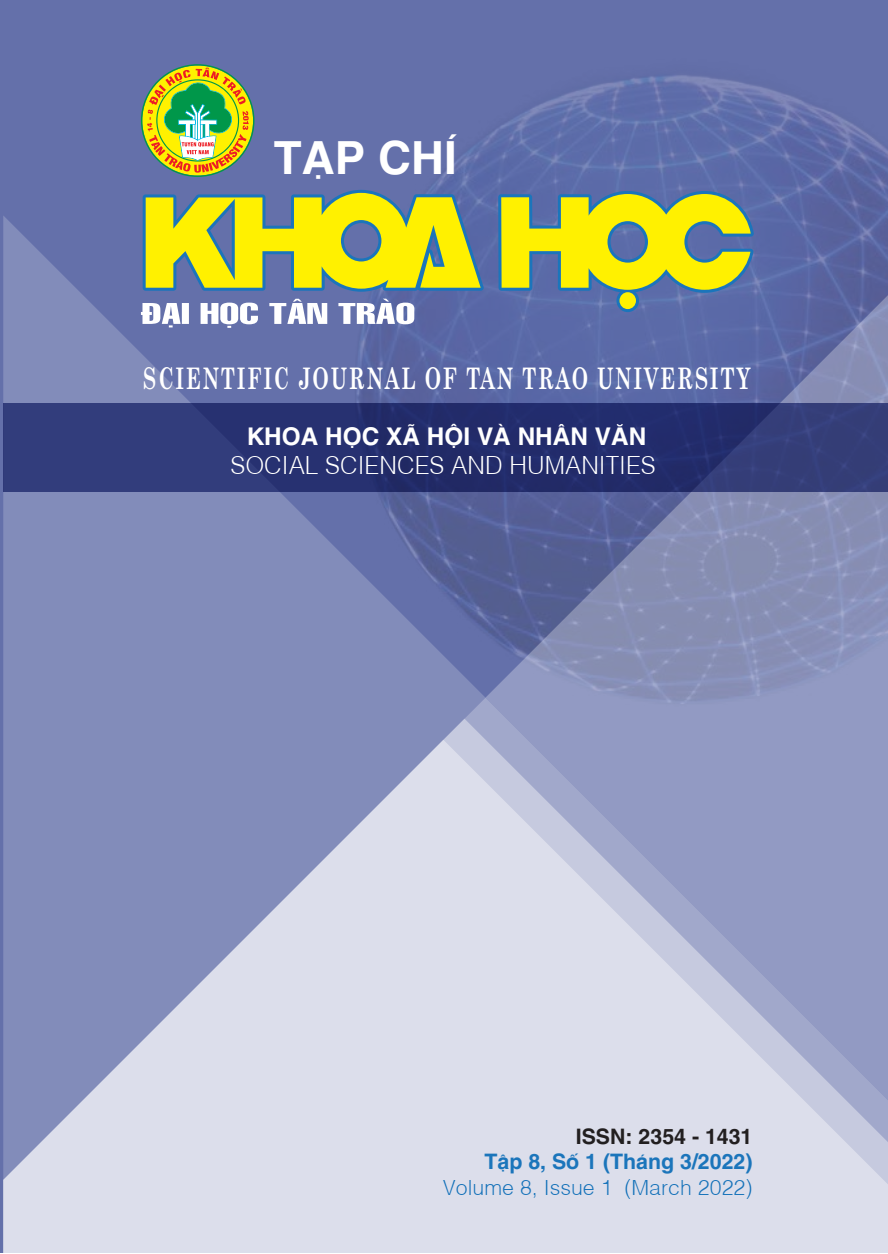DETERMINING THE STRUCTURE OF THE OFFICE CULTURAL ENVIRONMENT IN THE STUDY OF BUILDING AN OFFICE CULTURE ENVIRONMENT IN VIETNAM TODAY
DOI:
https://doi.org/10.51453/2354-1431/2022/740Keywords:
Structure, elements, office cultural environment, building office cultural environment VietnamAbstract
In the spirit of the Resolution of the Ninth Conference of the 11th Party Central Committee on cultural construction and development, Vietnamese people meet the requirements of sustainable development of the country, building a healthy cultural environment at agencies, units, organizations... is one of the specific contents of the task “Building a healthy cultural environment” - one of the six key tasks of the orientation of building and developing Vietnamese culture and people. In the study of the building an office cultural environment, contributing to concretizing the second task of the 9th Central Resolution, the XI term, the implementation of theoretical and practical research has the first important significance, in which: Determining the structure with specific elements of the office cultural environment is considered the first thing to do in order to provide the arguments and scientific bases that are prerequisites for the process of building a office cultural environment.
Downloads
References
[1] A.I. Aknondov (editor) (1981), Theory of Marxist-Leninist culture, Cultural Publishing House, Hanoi.
[2] Party Central Committee (1998), Resolution of the Fifth Conference of the Party Central Committee VIII term on building and developing an advanced Vietnamese culture imbued with national identity, Hanoi .
[3] Party Central Committee (2014), Resolution of the Ninth Conference of the 11th Party Central Committee on building and developing Vietnamese culture and people to meet the requirements of sustainable development of the country , Hanoi.
[4] Chieu, H.D. (2011), “Building a grassroots cultural environment according to the Party’s orientation”, Political Theory, (6), pp.47-51.
[5] Standard, N.T. (2014), “Building a healthy cultural environment for people to meet the requirements of sustainable development”, Communism, (2).
[6] Dung, N.D. (2008), Hanoi office culture - Current situation and solutions, City-level scientific project, Hanoi.
[7] Germany, L.Q. (2015), “Contributing to discuss the concept of cultural life and cultural environment”, in Theoretical and practical issues of cultural life and cultural environment, Ethnic Culture Publishing House, Hanoi.
[8] Ha, N.H. (2005), Cultural environment with the construction of Vietnamese lifestyle and people, Culture - Information Publishing House, Hanoi.
[9] Huy, D. (2001), Building the current cultural environment in our country from the perspective of learning values, Culture - Information Publishing House, Hanoi.
[10] Loan, T.T. (2015), “Cultural life, cultural environment - some theoretical and cognitive issues” Theoretical and practical issues about cultural life, cultural environment, National Culture Publishing House, Hanoi.
[11] Mai Hai Oanh (2012), “Talking about the cultural environment”, Culture and Art, No. 4 (334), pp.7-11.
[12] Georges Olivier (1992), Human ecology, World Publishing House, Hanoi.
[13] Thanh, V.D. (2004), On building the grassroots cultural environment (reprint), National Political Publishing House, Hanoi.
[14] Thuc, N.H. (2015), “Talking about the concept of cultural life and cultural environment”, in Theoretical and practical issues about cultural life and cultural environment, National Culture Publishing House. , Hanoi.
Downloads
Published
How to Cite
Issue
Section
License

This work is licensed under a Creative Commons Attribution-ShareAlike 4.0 International License.
All articles published in SJTTU are licensed under a Creative Commons Attribution-ShareAlike 4.0 International (CC BY-SA) license. This means anyone is free to copy, transform, or redistribute articles for any lawful purpose in any medium, provided they give appropriate attribution to the original author(s) and SJTTU, link to the license, indicate if changes were made, and redistribute any derivative work under the same license.
Copyright on articles is retained by the respective author(s), without restrictions. A non-exclusive license is granted to SJTTU to publish the article and identify itself as its original publisher, along with the commercial right to include the article in a hardcopy issue for sale to libraries and individuals.
Although the conditions of the CC BY-SA license don't apply to authors (as the copyright holder of your article, you have no restrictions on your rights), by submitting to SJTTU, authors recognize the rights of readers, and must grant any third party the right to use their article to the extent provided by the license.


